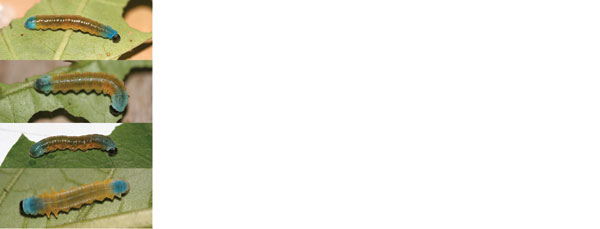Extracts

Copycat caterpillars mimic caustic cousins to survive
By Danielle Torrent
The world can be a dangerous place for an insect — especially in the larval stage.
So it’s a little surprising to some scientists that caterpillars don’t use the same defense tactics that many butterfly species have evolved.
In particular, there are remarkably few documented cases of mimicry in caterpillar species. In mimicry rings, an edible species gains a defensive advantage by evolving to look like a noxious one. In the butterfly world, the most famous case is the viceroy’s mimicry of the not-so-edible monarch.
But researchers from UF’s Museum of Natural History say that mimicry may be more prevalent in caterpillar species than anyone realizes. In the Annals of the Entomological Society of America they report finding two new possible examples of caterpillar mimicry rings: one on the Caribbean island of Hispaniola, and one in the upper Amazon.
The mimics are actually edible prey for birds and other predators, explains Keith Willmott, lead author for the study and associate curator at the museum. But their copycat coloration deceives predators into thinking they aren’t. They get the protection without having to invest in the biologically expensive systems required to make them toxic.
Andrei Sourakov, study co-author and collection coordinator at the museum said that caterpillar mimicry examples may have been overlooked in the past because larvae must be raised to adulthood to identify these complexes, and that takes weeks of lab work. Also, relatively few institutions maintain insect collections that feature species at their immature stages, he said.
The researchers said that they hope this finding will inspire others to investigate more closely the ecological processes that influence insects at their immature stages — especially since immature stage insects are the most plentiful on the planet.